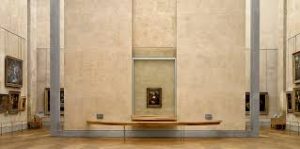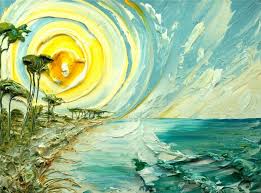HISTORY OF THE DEVELOPMENT OF THE DUTCH AND FLEMAND STILL LIFE (part 1)
 In the 50s and 60s of the 16th century, the situation in the Netherlands became extremely tense. If in the first half of the century the burden of economic exploitation by Spain was balanced to a certain extent for the bourgeoisie with the benefits derived from the inclusion of the Netherlands in the world empire of the Habsburgs, which guaranteed the security of trade, in the second half of the 16th century the situation radically changed. The dependence of the Netherlands on feudal Catholic Spain became a brake on the further development of the country.
In the 50s and 60s of the 16th century, the situation in the Netherlands became extremely tense. If in the first half of the century the burden of economic exploitation by Spain was balanced to a certain extent for the bourgeoisie with the benefits derived from the inclusion of the Netherlands in the world empire of the Habsburgs, which guaranteed the security of trade, in the second half of the 16th century the situation radically changed. The dependence of the Netherlands on feudal Catholic Spain became a brake on the further development of the country.
Increased pressure on the Dutch provinces, the tax system, which undermines the foundations of trade – all this delayed the development of productive forces. The free development of the bourgeoisie has already become incompatible with the feudal system. Continue reading
HISTORY OF LANDSCAPE GENRE DEVELOPMENT (part 2)
 Landscape motifs began to play a more important role during the High Renaissance. Many artists began to carefully study nature. Having abandoned the usual construction of spatial plans in the form of wings, piling up parts that are inconsistent in scale, they turned to scientific developments in the field of linear perspective. Now the landscape, presented as a whole picture, is becoming an essential element of artistic plots. So, in the altar compositions, which the painters most often referred to, the landscape looks like a scene with human figures in the foreground. Continue reading
Landscape motifs began to play a more important role during the High Renaissance. Many artists began to carefully study nature. Having abandoned the usual construction of spatial plans in the form of wings, piling up parts that are inconsistent in scale, they turned to scientific developments in the field of linear perspective. Now the landscape, presented as a whole picture, is becoming an essential element of artistic plots. So, in the altar compositions, which the painters most often referred to, the landscape looks like a scene with human figures in the foreground. Continue reading
HISTORY OF LANDSCAPE GENRE DEVELOPMENT (part 1)
 Translated from French, the word “landscape” (paysage) means “nature”. This is what the genre is called in fine art, the main task of which is the reproduction of natural or human-modified nature.
Translated from French, the word “landscape” (paysage) means “nature”. This is what the genre is called in fine art, the main task of which is the reproduction of natural or human-modified nature.
In addition, the landscape is a specific work of art in painting or graphics, showing the viewer nature. The “hero” of such a work is a natural motif or a natural motif invented by the author.
Elements of the landscape can be found already in cave art. In the Neolithic era, primitive masters schematically depicted rivers or lakes, trees and stone blocks on the walls of caves. On the Tassilin-Ager plateau in the Sahara, drawings were found with scenes of hunting and driving herds. Continue reading
HISTORY OF THE ORIGIN AND DEVELOPMENT OF THE WHITE ART
 Thread painting
Thread painting
“A tapestry is a beauty, slowly created by warm, skillful hands, a calm mind and a sensitive soul.”
I. Dvorkina
Today, a variety of decorative and applied art, traditionally called a “tapestry”, acts as a complex artistic phenomenon that combines the qualities of several genres at once – from “hand weaving” to “textile” sculpture.
Initially, the concept of tapestry was a method of producing fabric that looks like a wall lint-free carpet with a plot or ornamental composition. This carpet was woven manually, from colored or silk threads through their cross-weave. Continue reading
HISTORY OF THE ORIGIN AND DEVELOPMENT OF STAINED-GLASS ART (part 2)
 Let us imagine for a moment the decoration of these choirs: painted walls and ceilings, glazed tiled stoves, patterned carpets and carved shutters … In the interiors of rich chambers, only windows could remain colorless spots. Stained-glass windows — multicolored glasses and mica plates assembled in the pattern — helped to solve the problem, complementing the atmosphere of the luxurious life of the then aristocracy. “The colored light that now penetrated through the glass and mica stained-glass windows created a special, joyful mood, made the interior cozy, complemented the beauty of the brightly-patterned decoration of the room.” Continue reading
Let us imagine for a moment the decoration of these choirs: painted walls and ceilings, glazed tiled stoves, patterned carpets and carved shutters … In the interiors of rich chambers, only windows could remain colorless spots. Stained-glass windows — multicolored glasses and mica plates assembled in the pattern — helped to solve the problem, complementing the atmosphere of the luxurious life of the then aristocracy. “The colored light that now penetrated through the glass and mica stained-glass windows created a special, joyful mood, made the interior cozy, complemented the beauty of the brightly-patterned decoration of the room.” Continue reading



